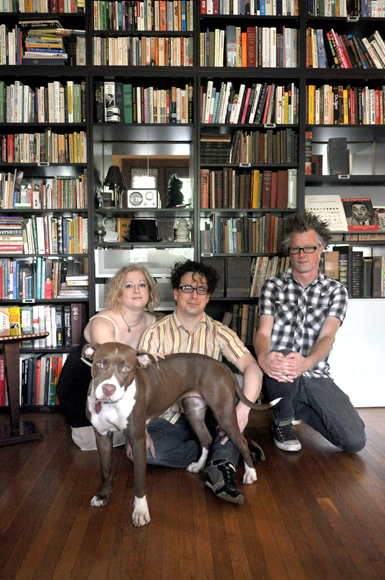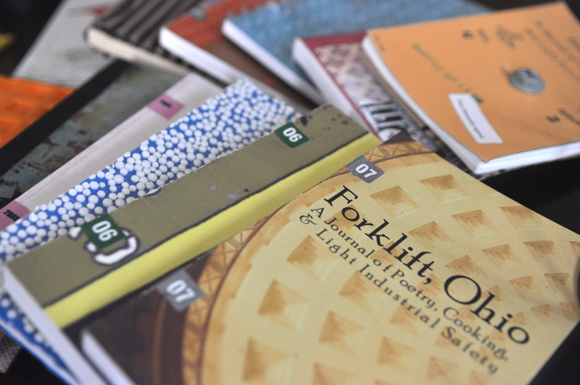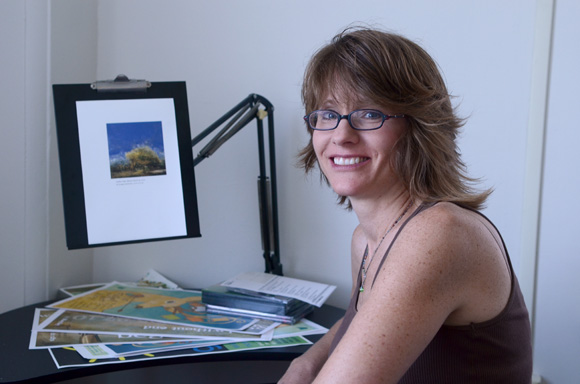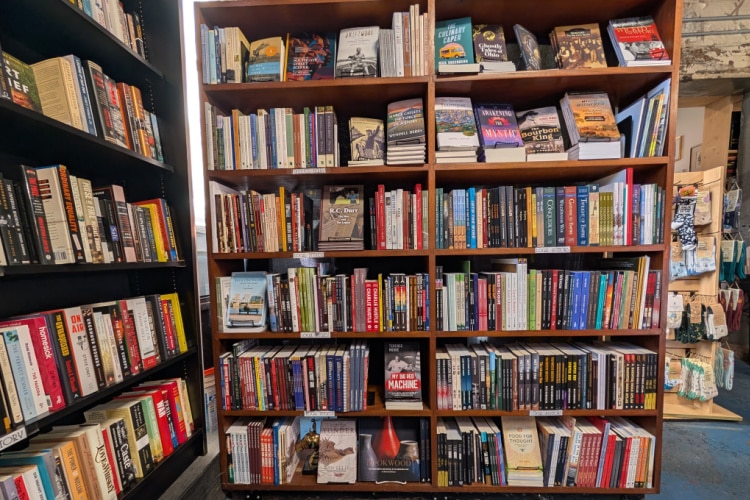Hungry eyes: City’s lit journals feed world of readers
For literary journal devotees and their posses of word nerds, Cincinnati is rich with talent and deep with possibility. Through their efforts, new generations of writers and readers continue to fall in love with a fresh turn of phrase, an undiscovered poet or a story that embodies truth and light in a compelling way.
On the top floor of McMicken Hall on the University of Cincinnati Clifton campus, tucked into an office suite that feels more like a living room than a nook of academia, Nicola Mason is talking cornhole. Specifically, how she and a team of creative writing PhD students used the game to lure subscribers to their booth at a national literary conference, where thousands of journals compete for a limited number of readers.
The petite, bespectacled managing editor of The Cincinnati Review knows that today, keeping a literary magazine on readers’ radar means more than publishing top-quality work. It means Facebooking, blogging and crafting partnerships with other publications. “Part of it is giving literature a better rap,” she says.
Mason, the former managing editor of The Southern Review, brought The Cincinnati Review to life, launching it from zero to one of the top 50 journals in the world – yes, the world – in just eight years.
The ranking of #20, fresh from Every Writer’s Resource website, puts TCR in the same category as The New Yorker, the Paris Review, McSweeney’s and Granta. For a bi-annual journal pieced together with one part-time staffer and the blood, sweat and tears of bleary-eyed grad-school volunteers, it’s an impressive achievement.
“I got into editing – and writing, for that matter – because I’m a word nerd,” Mason says. “In literature – good literature – you connect both to the consciousness of the speaker/character and to the mind of the writer. That’s pretty amazing, when you think about it.”
TCR assistant editor Matt McBride, a PhD student and working poet, recognizes his journal work as an important part of living a life of the arts. “Part of your responsibility as a poet is making sure poetry is out in the community and that you promote other poets,” he says.
McBride also serves as assistant poetry editor for the Cincinnati-born online journal Memorious, published bi-annually. “If you don’t put in the legwork, poetry might go away,” he says. “I want to participate in that community.”
That community takes a very different shape one neighborhood away, in Northside, where editor Matt Hart and designer/publisher Eric Appleby build a hands-on path to create the 18-year-old Forklift, Ohio: A Journal of Poetry, Cooking & Light Industrial Safety. At the dining room table Appleby shares with wife and managing editor Tricia Suit, the crew hand-makes every issue of the “object” journal that, as its name hints, defies easy description.
Each is a poetry collection with cover art that resembles household and industrial objects – a bag of chili and beans, an employee invoice or shipping boxes. One book was dipped in wine and baked in the oven. Another has burn spots on it. Yet another resembles a plumber’s handbook. Fabricate, a gallery/store in Northside, has sold more than 300 copies of #22, and recently asked for another set.
Hart makes the final poetry selections and sends them to Appleby, who arranges the works by content, not by author. “A lot of people respond to the fact that it’s like a book you read from Page 1 to 120, rather than dipping in and reading a few things by someone you already know,” Hart says. “Eric has figured out how to make a literary journal that people actually want to read.”
“I love Forklift,” says TCR’s Mason, who says that having other literary journals in the city benefits readers and artists alike. “It’s wonderful for the life of the arts.”
Hart, who also teaches at the Art Academy of Cincinnati, agrees that having a community of writers with which to read, and commiserate, is both helpful and affirming. “The city is full really amazing, vibrant, electrified weirdos,” he says. “There are so many driven, creative, imaginative people here.”
While TCR fills a niche in the more traditional literary landscape, with selections regularly chosen for “Best of” anthologies, Forklift appeals to the indie scene with its purposefully non-traditional design and provocative content.
They share an appreciation for each other’s aesthetic and a dedication to preserving the power of art and literature. But for each, that preservation takes distinct forms.
At TCR, Mason and her volunteer staff connect with readers via Facebook and entice them with blog posts. “More people need to know we exist,” says Mason, who has handed out back issues at Findlay Market to raise awareness of her relatively young publication, which now boasts 500 subscribers.
At Forklift, Appleby says his artistic hobby fulfills very personal goals. “I like to say some have boats, some have lake houses, and some like playing golf,” he says, explaining his investments in bringing the journal to life. “I’m not an educator or a publisher in my daily life, but I know a couple times of year I’m going to get an amazing stack of poetry from the poets that I like or get a chance to meet. It doesn’t occur to me to stop doing it.”
Photos by Scott Beseler
Top to bottom: Tricia Suit, Eric Appleby and Matt Hart of Forklift, Ohio
Forklift, Ohio back issues
Forklift, Ohio in the making
Nicola Mason at The Cincinnati Review
Copies of The Cincinnati Review


















